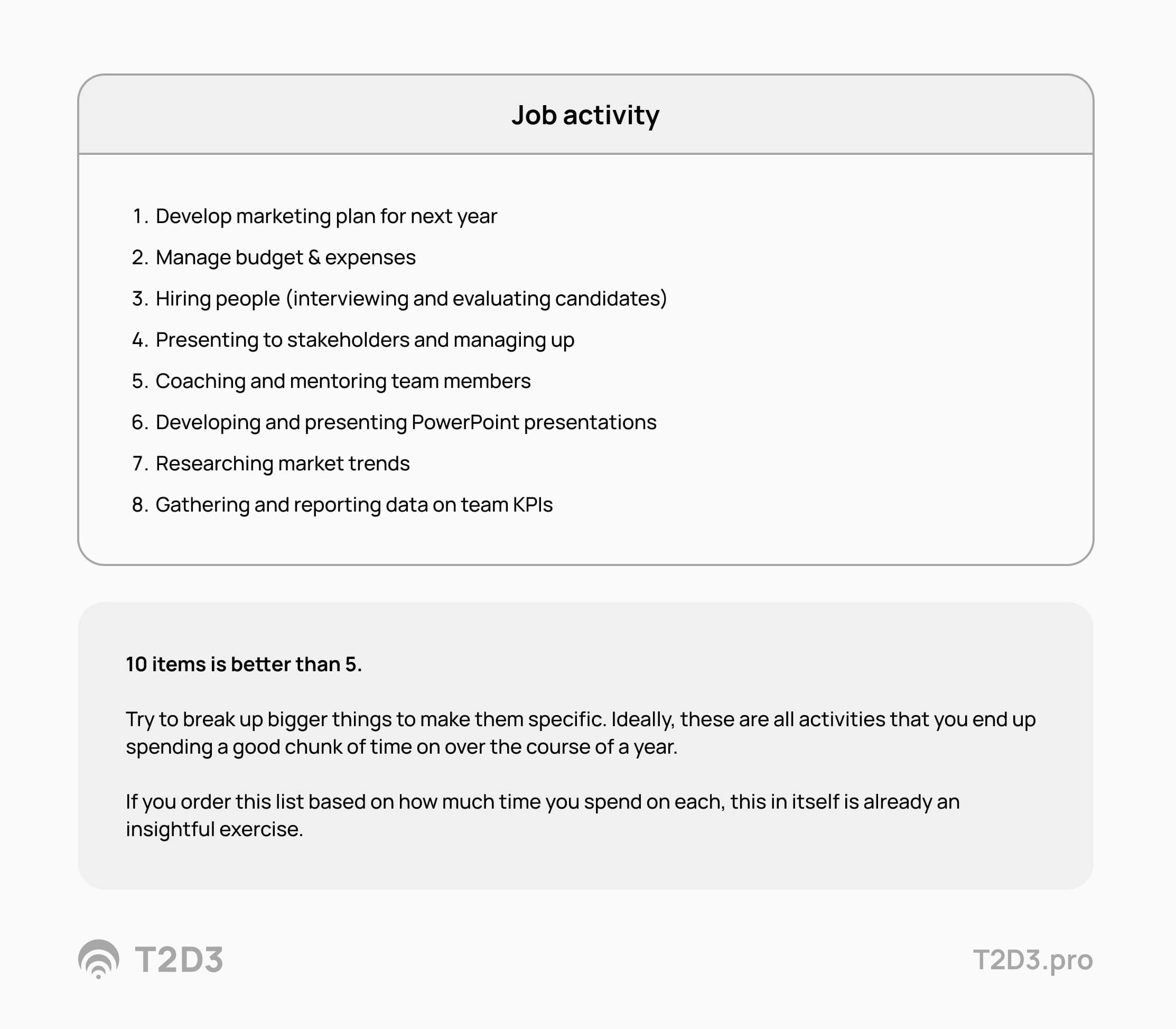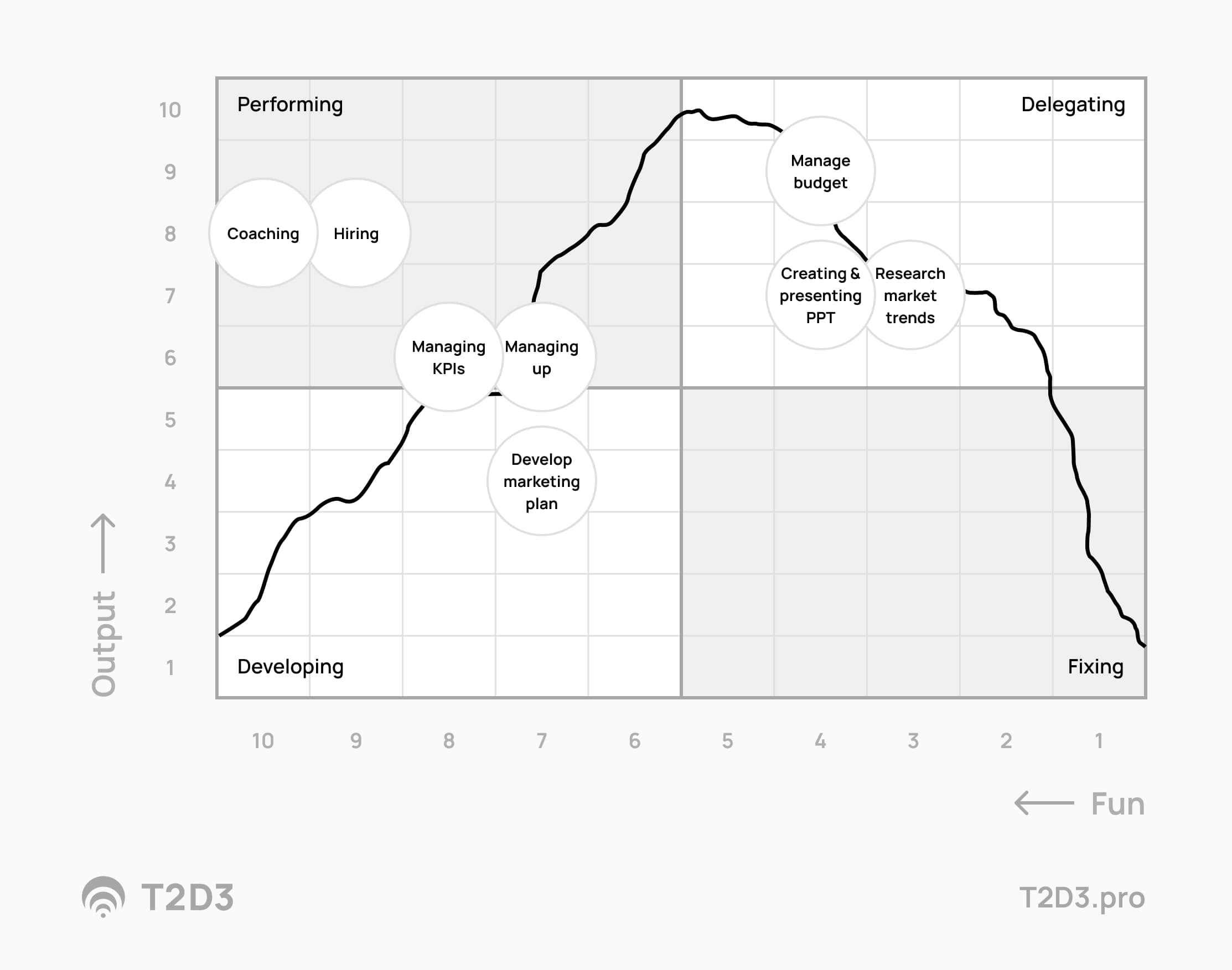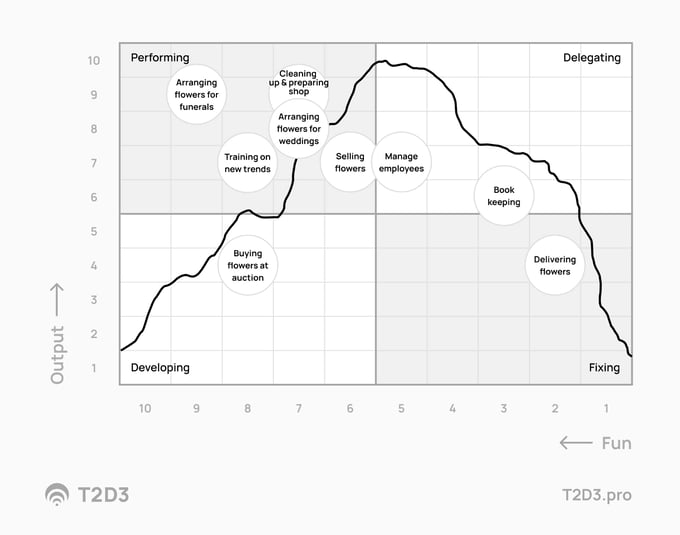What do you most enjoy doing? What are you passionate about? What makes you feel happy? Growing your own business from the ground up is not easy. Every day you challenge yourself, learn something new, improve on your strengths, get out of your comfort zone, and yet there are always things that you wish you didn’t have to do. Not everything is fun. In fact, some of your daily tasks are yawn-inducing and boring. How do you ensure you stay productive and enjoy your work?
Try this little exercise. Go through this personal development matrix. The results will most likely surprise you and help you see where you’re lagging, where you excel, what to do next, and what to delegate to other team members to give them an opportunity to grow.
Your team should include specific roles. Learn what they are and what to look for in your first marketing team.
READ ARTICLE
Personal development matrix
1. Assess your job
Write down 5 to 10 tasks that make up your job. The things that you spend most of your time on. For example:

2. Assess yourself
Use a 1 to 10 rating scale to “rate” these tasks according to your performance and to how much you enjoy doing them. For example:
.jpg?width=2226&name=personal%20development%20matrix_assess%20yourself%20(1).jpg)
3. Analyze
Plot the activities in the matrix (the “fun” scale runs down to the right). For example:

You get an even spread between the performing and the developing quadrants in a perfect job. You are performing, you’re being challenged, and you develop new competencies. In the upper right corner, you’ll find opportunities to delegate tasks to a peer or a direct report, for whom these activities might land in the development quadrant. The matrix will also show you great mentoring opportunities, increasing your “output” of something you’re already good at.
The lower right quadrant - the fixing section - warrants serious action. If you stopped enjoying something that you used to do very well (it moved from the upper left to the lower right, probably via the upper right), performance will at some point be impacted. Of course, you’ll have to deal with a few instances when something moves from development to fixing as well. These are usually tasks you don’t want to, do but were asked to do, or you just made a bad decision raising your hand.
Here is another example, a fictitious job of someone owning a flower shop:

The above tells us that this person needs to find someone to do the deliveries ASAP and focus the freed-up time on something new (fill the performance quadrant). It’s important to be on the lookout for someone who’d enjoy taking over some of the bookkeeping - or outsource it altogether.
The development matrix tool is great to do self-reflection on the priorities in your job. Are you still learning? Are you having fun? Are you at risk of throwing in the towel and not giving something your best performance? Should you delegate some tasks? It’s also a great tool to use with your team on dividing up the work in a group so that everyone gets an ideal mix.
So block out an hour or so of your time, take a piece of paper, and draw your own personal development matrix. Complete it. Enjoy the results.